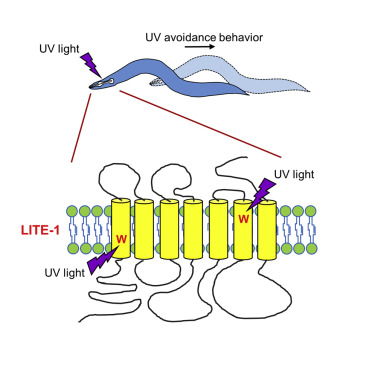
Light-Sensitive Nematodes
Nematodes are fascinating creatures. They can survive in almost any habitat, with some of the microscopic organisms living as parasites on animals and some latching onto plants. We now have another reason to be fascinated by these humble roundworms: they can sense light better than humans.

In a study conducted in 2008, researchers observed that nematodes would avoid light when it hit them even though they lacked eyes to detect the light. In a new study published in the journal Cell, researchers looked into why and found that the worms contain a light-sensitive protein, or photoreceptor, unlike any found in any other animal.
The protein is called LITE-1, and it is different from opsin and cryptochrome, the only two previously identified photoreceptors found in animals, because it is from the taste receptor family. While they thought maybe LITE-1 was simply “tasting” the chemical byproducts unleashed when UV light hit its host animal’s body, further testing lead the researchers to conclude that the protein is indeed a photoreceptor capable of detecting UV light. Not only that, it is actually 10 to 100 times better than the human eye at detecting light in the visible spectrum.
Protection from UV Rays
Skin cancer is the most common type of cancer in the United States. In 2013, around 71,943 people in the country were diagnosed with melanomas of the skin and 9,394 people died from them. These deadly skin disorders are mostly caused by excessive sun exposure. Because LITE-1 can absorb both UVA and UVB light, scientists could potentially use it to produce improved sunscreens that can capture UV light much more effectively than conventional ones.
While we continue to create new treatments and medicines in labs, this research shows that some of the best solutions for our health problems could already exist in nature. If a previously unknown protein from a microscopic worm could improve the mortality rate associated with melanomas, what other answers to our medical problems have we not yet discovered?